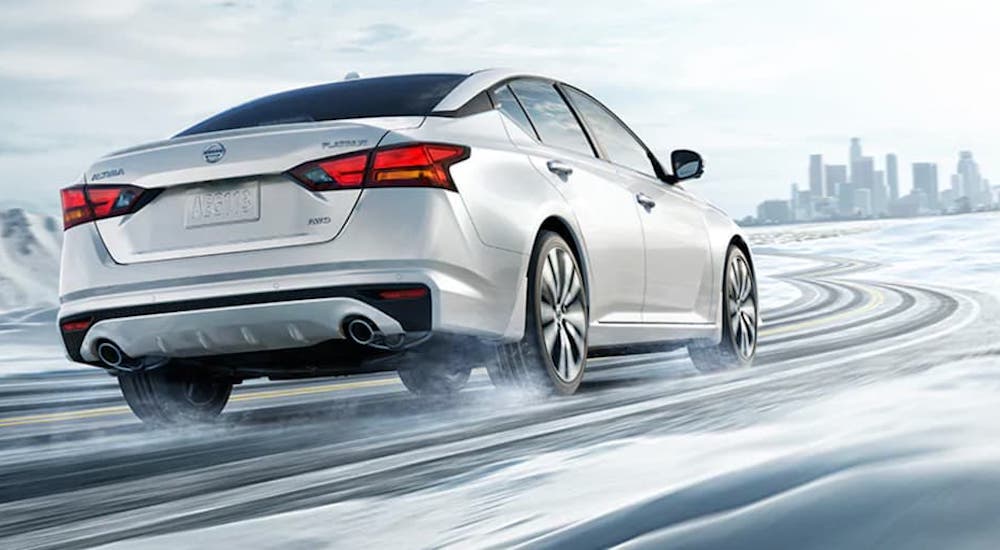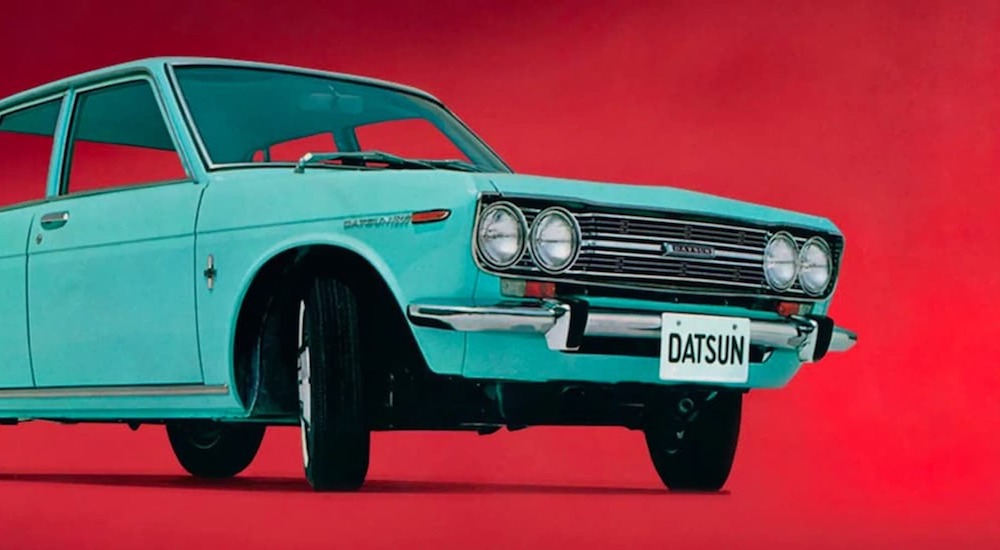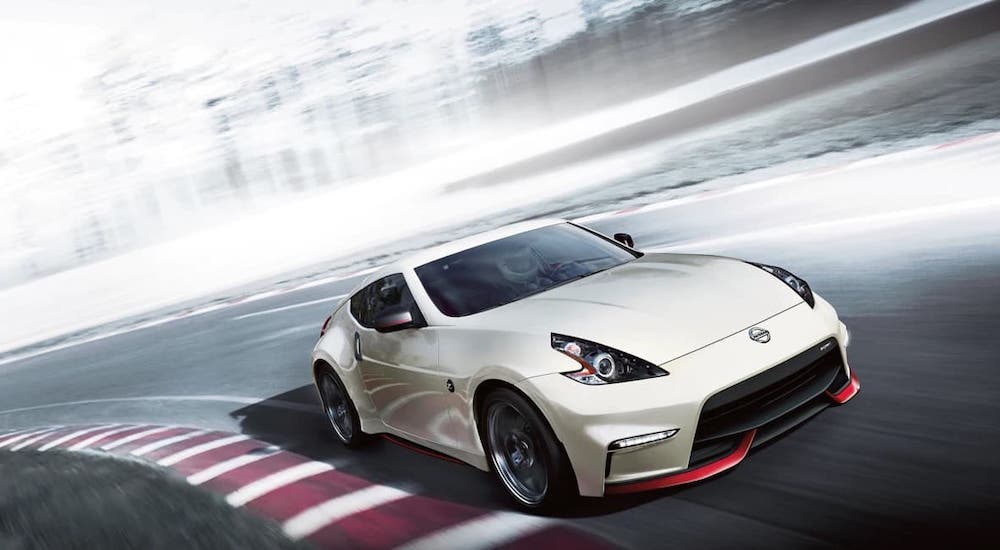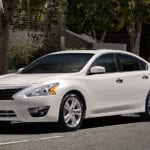For the past decade, Nissan has been a force to be reckoned with here in Canada, with fantastic sales numbers and an incredibly popular lineup––but that has not always been the case. Over the years since it first appeared from overseas, Nissan has had its share of ups and downs here that have included some recent struggles. Going back to 2012, the brand sold fewer than 100k vehicles in Canada that year, posting a 3% decline in overall sales from the previous year and underperforming in what was a very big year for total car sales across the country.
And yet, the following year, a leadership change helped usher in a massive surge of sales and ongoing success for Nissan in Canada. In large part, this success grew from a change of mindset: realizing that Canada is its own country. This is something you will typically encounter when you visit a Nissan dealer and work with someone who really understands what you need from a vehicle. But for a time, the failure to recognize the importance of a strong Canadian identity when approaching car sales hurt Nissan.
Nissan Origins and Founding
Before jumping into how things have played out here in Canada, let’s briefly take a look at where it all started with Nissan. What we know as “Nissan” today started with a Japanese car company and its first car called the “DAT.” This eventually resulted in DAT Automobile Manufacturing and a car initially called the “Datson,” which quickly became the “Datsun.” In the 1930s, DAT became part of a holding company called Nihon Sangyo, which was abbreviated as “Nissan” for the Tokyo Stock Exchange––in 1934, they started a new company called Nissan Motor Co.
In the decades that followed, Nissan began exporting its vehicles to other countries but used the Nissan name only in Japan. Vehicles in other countries, including here in Canada, were sold under the name “Datsun,” which is why you’ll find older Datsun models that were the predecessors to some modern Nissan vehicles. It took a few decades for Nissan to really expand following World War II, and Datsun models didn’t start gaining popularity here in Canada until the 1960s.
Early Years in Canada
A few independent dealerships started selling Datsuns in the early 1960s, but they were still pretty rare, and Nissan’s presence here in Canada was quite limited. That is, however, until Nissan Automobile Canada was founded in January of 1965 with headquarters in Vancouver and a direct connection to Nissan’s headquarters in Japan. With this, Nissan officially began working its way across the country and more than 80 Datsun dealerships opened in the first year following the headquarters opening. While Datsun models might not have been an immediate smash here in Canada, they grew in popularity quickly, and early vehicles like the Datsun 1200 and Datsun 510 began to find a growing army of fans who enjoyed their performance and style.
The Datsun 510 first began selling here in 1968 and cost just under $2,200 brand-new––it had been designed in large part by the mind behind the BMW 2002 and the Datsun 240Z, which has since become one of the most sought-after sports cars on the market. Spurred on by the growing popularity of these models, Datsun became the top-selling import brand across Canada by 1971, and other companies like Toyota and Honda were left chasing after its success.
Things got even better for Nissan when the Oil Crisis of the 1970s hit, and drivers placed renewed importance on fuel efficiency. At the time, the Datsun 1200 was the most fuel-efficient car on the road, which helped propel Datsun to even greater success throughout the decade. Despite this boom, however, there were some missteps––the Datsun models that followed, like the Datsun 280Z and Datsun 710, became larger, which meant they lost efficiency and some of their nimble design, leaving some customers looking elsewhere.
From Datsun to Nissan
One of the biggest changes for Nissan occurred in the 1980s: at that time, Nissan moved its Canadian headquarters to Ontario. At the same time, it finally decided to drop the Datsun name for its export models and simply became “Nissan” across the world. This change happened faster here in Canada than in some other markets, but Nissan still had to make serious efforts to ensure its customers knew that Nissan models would deliver performance and efficiency comparable to the Datsuns that they had grown to love.
What really complicated things, however, is that other companies caught up to where Nissan had its biggest advantages, and there were more options than ever for efficient compact cars, making the years that followed a greater struggle than Nissan had planned. Over the next couple of decades, Nissan continued to do well throughout Canada, but there was clearly something lacking. In some ways, this came to a head in 2012 when Canada had a fantastic overall year for car sales––more than 1.6 million vehicles sold––yet Nissan failed to sell even 100k models across the country.
The 2013 Change
Although there are certainly numerous factors that led to Nissan’s turnaround the following year, the importance of Christian Meunier as the new Chief Executive Officer (CEO) of Nissan Canada cannot be overlooked. Meunier took over in 2012 as the numbers were low but quickly began to make some major changes that resulted in huge growth. Nissan sold over 111k models in 2013, nearly 12% growth from the previous year, and more than 138k vehicles here in Canada in 2014. When Meunier took over, the CEO of Nissan Motor Co (not just in Canada) set a goal of Nissan representing 8% of the Canadian vehicle market by 2016.
So how did Nissan do? In 2016, there were 1.9m vehicles sold here in Canada; of them, 156k were Nissan models––this accounted for 7.97% of all car sales, which is pretty close. Meunier hit the goal the following year when Nissan made up nearly 8.3% of all vehicles sold in Canada, demonstrating that he could deliver and return Nissan to the glory days of Datsun in the 1970s. Considering how competitive the auto industry is these days, that was a tremendous feat.
Much of Meunier’s success has been attributed to his approach to car sales in Canada, particularly the fact that he has treated Canada as its own country. The three preceding CEOs of Nissan Canada had all been Americans, while Meunier is French-born and has said, “We cannot have US products coming into Canada and hope that they will be successful.” This was the push behind moves such as bringing back the Nissan Micra in 2014, a subcompact car sold here but not found in the US.
Moving Forward and the Years Ahead
Although leadership at Nissan Canada has changed in recent years, it’s clear that they still have a focus on ensuring they treat this market as its own thing. With all due respect to our neighbours to the south, Canada is not simply another state with a love for hockey and maple syrup. Canadian drivers have their own unique needs, and the modern Nissan lineup reflects this. For instance, many of Nissan’s larger models––including the Altima sedan––now come standard with all-wheel drive to safely handle Canadian winters. Decisions like this have helped Nissan secure its place in the market and have created a promising future for this storied brand.






